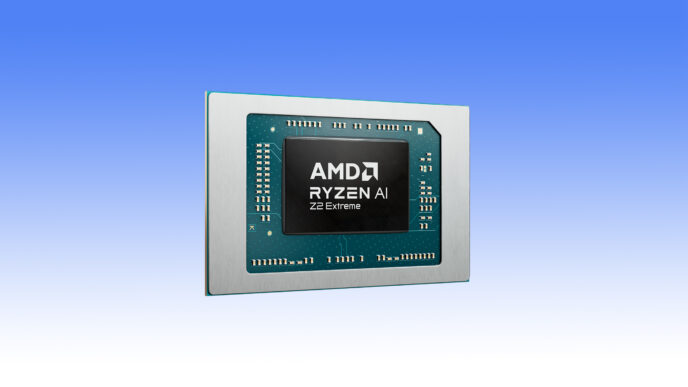GamerBoom co-founder T-RO says gameplay data is the next gold rush for AI and machine learning.
Forget vague “interactive media.” Every click, dodge, and team play in games is time-stamped, geo-located, and goal-driven. That data is pure gold for training AI agents that can tackle real-world problems like traffic routing, hospital triage, and drone navigation.
The global gaming base is now 3.4 billion players, generating $177 billion annually. Gameplay logs connect decisions to clear rules and goals, offering rare behavioral insights under pressure.
This data trains AI to act like esports pros—anticipating moves, managing risks, and collaborating on the fly.
Regulations are catching up. The EU’s AI Act, effective since February, bans emotion recognition at work and predictive policing but allows lawful data use with strict frameworks. Zero-knowledge proofs (ZKPs) could become the standard—proof-backed data packets, audit logs, and easy opt-outs protecting privacy while enabling innovation.
Cosmetic in-game items lose appeal fast. Behavioral data grows more valuable over time. Insurers license “risk fingerprints” from roguelike gameplay. Edtech uses shooter frustration curves. Hedge funds analyze MMO reward sequences. Onchain marketplaces trade gameplay tactics and negotiation patterns as synthetic assets.
Animoca Brands named AI and Web3 gaming top areas for 2025 investment, backing the trend.
Studios now use gameplay data for map balancing, QA, and procedural content. When robotics or logistics systems tap into this data, royalties can flow to original token holders.
Trust matters. Players lose confidence if their data is mined quietly for profit but return when transparency rules—clear opt-outs, audit logs, direct update notes.
T-RO says the move to sovereign data vaults with zero-knowledge attestations and smart contracts is underway. The legal frameworks exist. The data pipeline is live.
The gaming industry is no longer just selling skins and battle passes. It’s building a licensing economy around player behavior data. The AI data gold rush has begun.
T-RO, co-founder of GamerBoom, shared the analysis.
Forget the old pitch about “interactive media.” Every dungeon crawl, clutch revive and deck shuffle is time-stamped, geo-located and tied to an explicit objective. No other medium produces such clean, high-frequency reads on risk tolerance, resilience or cooperation.
Feed these sequences into reinforcement learners, resulting in the real-world effect. Agents trained on gameplay logs can anticipate lane merges, triage hospital queues or route cargo with the precision of an e-sports champion.
The global player base now exceeds 3.4 billion, contributing over $177 billion in yearly revenue. Gameplay logs link each decision to a defined rule set and goal. A missed parry, a delayed heal or a perfect draft ban all reveal cognitive patterns under pressure.
This level of behavioral fidelity is rare. When trained on it, delivery drones learn evasive maneuvers. Smart-grid systems anticipate surges before outages. Traffic networks identify risky drivers before accidents occur. The implications for machine learning and real-time AI systems are profound.
Concerns around surveillance are valid. Eye-tracking headsets and pulse-reading haptics have triggered waves of dystopian headlines. Recent regulations aim to set standards, however, and not install barriers.
The European Union’s AI Act, active since February this year, bans emotion-recognition at work and predictive policing. At the same time, it provides a framework for lawful data collection and processing.
Zero-knowledge proofs (ZKPs) may become the default. Data packets stamped with proof of origin, audit logs and revocable consent flows could become standard practice in international data exchange.
Just as age ratings in the 1990s calmed public anxiety and fueled gaming’s mainstream rise, transparent permissions and auditability can do the same for behavioral data in the AI era.
Cosmetic items lose appeal once inventories are full. In contrast, structured behavioral data sets grow more valuable with time and reuse.
While the web is crowded with scraped content, games generate original behavioral data every second. Insurers now license “risk fingerprints” from permadeath roguelikes. Edtech platforms model frustration curves based on shooter lobbies.
Animoca Brands, one of the most active crypto-native investors, recently identified AI and Web3 gaming as key focus areas for 2025, reinforcing the market’s confidence in these intersections.
In finance, hedge funds analyze reward-sequencing logic pulled from MMO economies. Onchain marketplaces are beginning to trade stealth routes, guild negotiation frameworks and loot rotation cycles as synthetic assets.
When a robotics simulator or logistics engine taps into one of these assets, royalties can flow to the tokenholder. This is already happening. Studios use gameplay-based decision graphs to balance maps, accelerate QA and generate procedural content with minimal human input.
Transparency is now a competitive advantage. According to the GDC 2025 State of the Game Industry, 30 percent of developers view generative AI as harmful, up from 18 percent the previous year. It’s a sign of shifting attitudes, driven partly by how player data is used behind the scenes. Players’ confidence fades when in-game actions are quietly funneled into external models for profit. It returns when they can see exactly what data is being used, how it’s verified and who benefits from it.
To build trust, opt-out settings must be immediate and informative. Players should understand the trade-offs, like longer match times, simpler game balance or slower content updates. Operational guides, audit logs and reporting channels should be listed directly within game updates, not tucked away in rarely accessed files.
The open standard that enables this level of clarity will boost adoption and may become a licensing product in its own right. Any consortium that publishes it can collect fees from integrations while shaping the baseline for fairness in AI training.
Telemetry from boss fights, squad chats and reaction times offers a live feed of cognition under stress. That is a data asset with value across sectors.
Studios still focused on selling seasonal battle passes are missing the deeper play. Forward-looking teams are building sovereign data vaults, issuing attestations via zero-knowledge systems and linking smart contracts to synthetic assets. This infrastructure enables real-world systems to license gameplay behavior and pay for it.
The resource is live. The legal frameworks are in place. The most valuable training fuel on the planet is streaming out of game servers every hour.
This is not just a trend. It is a paradigm shift. The gold rush has started.














